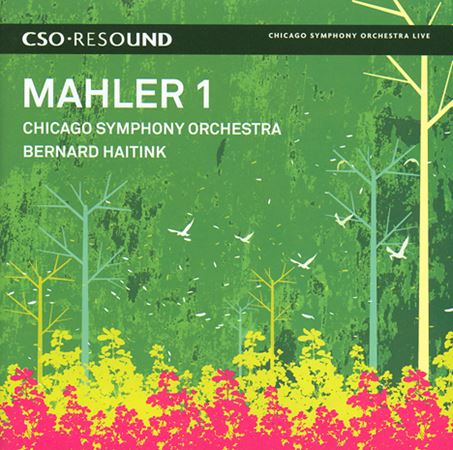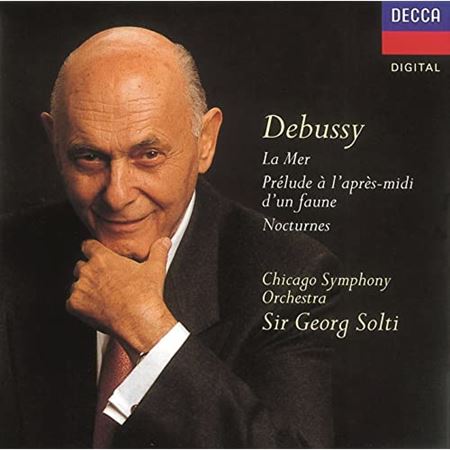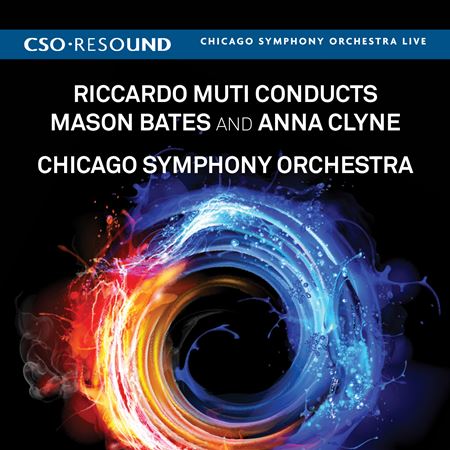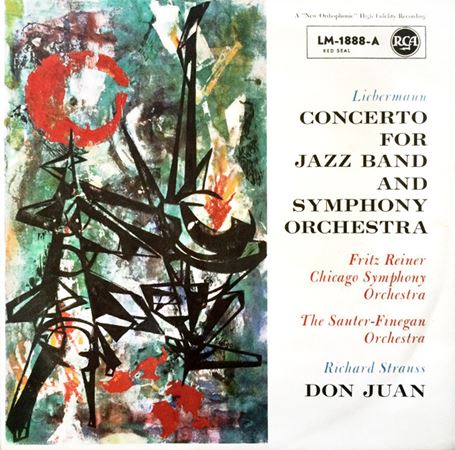Jon Weber is director of school and family programs for the Negaunee Music Institute at the Chicago Symphony Orchestra.
© Todd Rosenberg Photography
The Chicago Symphony Orchestra’s commercial recording legacy began on May 1, 1916, when second music director Frederick Stock led the Wedding March from Mendelssohn’s A Midsummer Night’s Dream for the Columbia Graphophone Company. The Orchestra has since amassed an extraordinary, award-winning discography on a number of labels—including Angel, CBS, Deutsche Grammophon, Erato, London/Decca, RCA, Sony, Teldec, Victor, and others—continuing with releases on the in-house label CSO Resound under tenth music director Riccardo Muti. For My Favorite CSO, we asked members of the Chicago Symphony family for their favorite recordings (and a few honorable mentions) from the Orchestra’s discography.
A member of the CSOA’s staff since 2006, Jon Weber is director of school and family programs, overseeing the CSO for Kids concert series, partnerships with Chicago Public Schools that support equitable access to arts education, and the Notes for Peace songwriting projects that provide solace and healing for family members who have lost loved ones to gun violence. In 2020, he was selected as one of thirty fellows from city and county government agencies and non-profit organizations to participate in the Civic Leadership Academy, a dynamic program of the University of Chicago’s Harris School of Public Policy. Weber holds degrees in instrumental music performance from DePaul University and Temple University, and in his time away from the CSOA, he enjoys running, gardening, and learning myriad facts about the five dwarf planets with his four-year-old son.
MAHLER Symphony No. 5
Recorded in the Musikverein in Vienna, Austria, in 1990 for London
Sir Georg Solti conductor
"This was among the first CDs I purchased when I was an all-state high school trumpet student in Atlanta in the 1990s. I didn’t know Mahler’s symphonies, and I barely knew the Chicago Symphony Orchestra at that point, but my concept of the orchestral trumpet sound was abruptly and forever changed by the arresting, devastating opening of the funeral march, played by long-time principal trumpet Adolph ’Bud’ Herseth."
MUSSORGSKY Pictures at an Exhibition
Recorded in Suntory Hall in Tokyo, Japan, in 1990 for Sony
Sir Georg Solti conductor
"I lucked into a VHS copy of this recording at my local library’s used-book sale, presumably as they were making room for a shipment of DVDs. It paired rehearsal footage, remarks, and demonstrations from the piano by Sir Georg Solti and a live performance at the famed Suntory Hall in Japan with an extraordinary ovation at the end. Solti’s suggestion that Mussorgsky and Ravel was the ’meeting of two geniuses’ was at least equaled, if not outdone, by the electrifying pairing of the CSO on tour with Solti. This video gave me the chance to connect faces with sounds I had grown to admire and allowed me to study the teamwork within sections for which the CSO was so famous."
RESPIGHI Pines of Rome and Fountains of Rome
Recorded in Orchestra Hall in 1959 for RCA
Fritz Reiner conductor
"As a college student, I gobbled up the CSO RCA recordings conducted by Fritz Reiner. They were budget friendly, packed with core repertoire, and the performances were remarkable for their precision and color, clarity of sound, balance, and evenness. I quickly developed a deep appreciation for the CSO’s tradition of excellence and the commitment of current members to steward that tradition. One of many musical highlights is the offstage trumpet solo in the second movement of Pines of Rome, which is one of the most frequently requested excerpts for orchestral auditions. Bud Herseth’s playing of the hymnlike melody is a master class in vocal style."
CORIGLIANO Symphony No. 1
Recorded in Orchestra Hall in 1990 for Erato
Daniel Barenboim conductor
Stephen Hough piano
John Sharp cello
1991 Grammy awards for Best Orchestral Performance and Best Contemporary Composition
"The most significant ’externship’ of my musical training was the three and a half years I spent as a Symphony Center usher while attending DePaul University, which gave me the incredible opportunity to hear virtually any CSO and visiting artist performance from 1997 until 2001. I first heard John Corigliano’s Symphony no. 1 performed in January 1998, led by Christoph Eschenbach (then music director at the Ravinia Festival). Almost immediately, I searched for the Grammy-winning 1990 Erato recording in the DePaul University listening library. It was perhaps one of the first works I had heard that responded directly, with raging anger and bottomless grief, to a societal catastrophe—the AIDS epidemic—that had occurred during my lifetime. (What extraordinary works will be written in response to the current pandemic?) What still stuns me about this recording is the scale and depth that is captured in Orchestra Hall: ghostly moments and fading memories emanating from solitary chairs; jarring, rumbling tuttis sweeping across the back rows of brass and percussion; and the horrifying shriek at the end of the tarantella."
PROKOFIEV Suite from Romeo and Juliet
Recorded in Orchestra Hall in 2013 for CSO Resound
Riccardo Muti conductor
“In 2016, the world marked the 400th anniversary of the death of William Shakespeare. At the CSO’s Negaunee Music Institute, my colleagues and I planned a set of school and family concerts, in collaboration with Chicago Shakespeare Theater, that mounted one-hour versions of A Midsummer Night’s Dream and Romeo and Juliet in the span of one week. (They are still among my favorite concerts we have presented for young people!) This CSO Resound recording was an indispensable resource as we designed curricula for teachers from Chicago Public Schools exploring the ways that composers interpreted Shakespeare’s text, and the ways that musical works by Prokofiev, Tchaikovsky, Berlioz, and Bernstein in turn shape our own interpretation of the characters, action, and themes of the play."
A few honorable mentions:
- BARTÓK Concerto for Orchestra with Fritz Reiner for RCA (1955)
- BARTÓK Music for Strings, Percussion, and Celesta with Fritz Reiner for RCA (1958)
- Chicago Symphony Orchestra Brass Live (works by Gabrieli, Bach, Revueltas, Prokofiev, Grainger, and Walton) with Dale Clevenger, Jay Friedman, Michael Mulcahy, and Mark Ridenour for CSO Resound (2010)
- MAHLER Symphony No. 6 in A Major with Georg Solti for London (1970)
- SHOSTAKOVICH Symphony No. 7 in C Major, Op. 60 (Leningrad) with Leonard Bernstein for Deutsche Grammophon (1988)
- STRAVINSKY Petrushka and Jeu de cartes with Sir Georg Solti for London (1993)
- VERDI Otello with Riccardo Muti for CSO Resound (2011)
MFC-026








